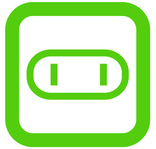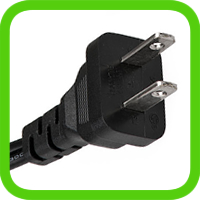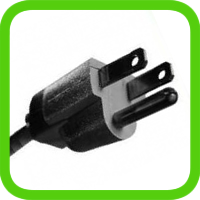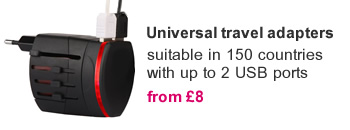




 Costa Rica electrical outlets : do I need a travel adapter?
Costa Rica electrical outlets : do I need a travel adapter?You're going to travel to Costa Rica and you don't know if your electric devices (your computer, mobile phone, battery charger...) will be able to work there?
To know if you need a travel plug adapter to go to Costa Rica, you have to consider 3 things : the shape of the plugs, the voltage and the frequency of the current delivered by electrical outlets in Costa Rica.
Here are the shape of the sockets in Costa Rica, and the the types of plugs used in Costa Rica :




If none of your usual plug is compatible, you should buy a travel adapter to be able to plug your electric devices in Costa Rica (please visit our selection on Amazon for more details).

The type of electrical outlets in Costa Rica is type A and type B.
Type A outlets have two flat parallel pins, while type B outlets have two flat parallel pins with a grounding pin.
The standard voltage is 120 V, and the frequency is 60 Hz.
Charging your phone or computer in Costa Rica is straightforward and can be done using your regular chargers. Here are a few options:
1. Power outlets: Costa Rica uses Type A and Type B power outlets. Type A outlets have two flat parallel pins, whereas Type B outlets have two flat pins with a grounding pin. Depending on your device's charger, you may need a plug adapter to fit into the Costa Rican power outlets.
2. Voltage: Costa Rica operates on a 120V supply voltage, which is compatible with devices from North America. If your devices are from a region with a different voltage (e.g., Europe with 220-240V), make sure to check if your charger supports dual voltage. Most modern chargers are capable of handling both voltages, but it's always wise to double-check the specifications.
3. USB ports: Many hotels and accommodations in Costa Rica provide USB ports for charging devices directly. This means you may not need to worry about plug adapters or voltage compatibility if you have a USB charger or cable.
4. Portable chargers: If you plan to explore remote areas without easy access to power outlets, carrying a portable charger (power bank) can be very useful. Charge the power bank before you go out, and you can use it to charge your phone or computer while on the go.
Remember to pack any necessary adapters or converters, especially if your devices use a different plug type or voltage. By considering these options, you can ensure a hassle-free charging experience for your phone or computer in Costa Rica.
The power adapter you should buy for Costa Rica depends on your country of origin and the type of plug you use. In Costa Rica, the power sockets are of type A and B.
If you are coming from a country that uses a different plug type, you will need a power adapter. The most common types are Type A, Type B, and Type C.
If your country uses Type A or Type B plugs, you will not need an adapter as these are the same as the sockets in Costa Rica. However, you may still need a voltage converter if your country uses a different voltage level.
It's important to ensure that the power adapter or converter you buy is suitable for your specific needs and compatible with the electrical devices you plan to use in Costa Rica. You can find power adapters and converters at most electronics stores or through online retailers.
Here is a list of the 20 largest cities in Costa Rica:
Please note that this list is subject to change as populations continue to evolve.